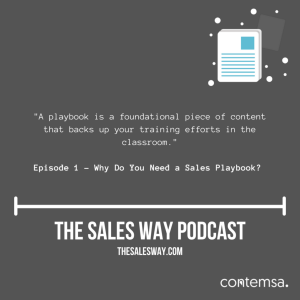Although the message makes up the meat of an explainer video, achieving the call to action (CTA) is its ultimate goal. Because this is why the video was created in the first place; to inspire and create a specific behavior reaction. Sign up today. Try a free demo. Start using this brand new solution. Yet even though the Call to Action is a vital component, it’s something that a lot of explainers don’t quite manage to pull off.
So today, to help maximize your explainer, let’s look at 5 common mistakes that explainer videos make…

Too Much
Although the call to action is the ultimate goal of your explainer video, it is important to remember that this need not the ultimate goal of your business. Meaning that if you are selling Widgets, the CTA doesn’t need to be “Buy a Widget Right Now!” It certainly can be, but depending on the price of that widget and the consumer’s familiarity with the product, suggesting an immediate purchase risks losing that viewer/consumer (and, also dangerously, deflating the positive momentum they had been feeling throughout your messaging).
So how aggressive should you be with your call to action? It’s tough to say, and is a decision that should be considered carefully based on the information you have about your target audience. But all things being equal, less tends to be more. And just by getting the viewer to take that action–however small–creates a positive psychological connection with that viewer.
Ultimately, the best way to think about your call to action (and your explainer video in general) is as a conduit to nudge the viewer further down the funnel. So while it can be common to think of your explainer video and the call to action as some kind of an end-all-be-all (especially if you’re on the production team, working on it daily!) it’s important to remember that the explainer doesn’t need to be fully comprehensive, but rather a tool to get people in the door. And the same is true with the call to action; it’s an engine to jumpstart the viewer and, under additional parameters you have in place, send him or her along on that buyer journey.
Too Abrupt
Even when you strike that perfect balance with the call to action itself, the way it’s deployed can be as important as what’s actually said. In particular, a common mistake is that the CTA feels “rushed” or “thrown in” at the end. Not only can this be confusing to the viewer, but because that experience is jarring it is likely to diminish their enthusiasm (and likelihood to take action).
Although I will admit that this doesn’t fully work as an analogy, thinking about the call to action like this can at least help with the flow: imagine the CTA as the finale to the broadway show of your explainer video. It’s different, of course, because a show isn’t suggesting you take action (after all, you’ve already bought the ticket!) but it can be useful in this instance just in terms of sending off the viewer. Finales tend to be big and important, but effective ones don’t just coe out of the blue and knock the rest of the story aside. They enter organically, elegantly, and the best ways often find ways (either through characters of visual motifs) to “call back” earlier experiences from the show.
Too Short (Visually)
A lot of times, the most logical call-to-action is to ask viewers to visit a specific URL address. This gets them moving through the funnel in a way that doesn’t require any sort of immediate purchase. So that’s good! But what’s not always good is the length of time that the URL is depicted on screen. Especially for longer website addresses, it’s particularly important that the explainer fixate for an increased duration. Because if they don’t move onto that next step, if they don’t enter the desired funnel, then the rest will have been all for nothing…

Too Salesy
At its core, an explainer video (and its call to action) are, of course, a sales tool. But it shouldn’t feel that way to the viewer. Or perhaps I should say that the best ones don’t. They don’t hide the fact that they are offering a good or service, that’s not what I mean, but they focus less on the “what” and more on “how” this can improve the viewer’s life and “why” this is worth their time.
Never is this tone more critical than at the very end of your explainer, with that all important call to action. Again, to reiterate the paragraph above, this is not about any form of deception. The viewer knows that you are trying to instigate a specific behavior. But they must feel like the reason this behavior is a good idea is because it benefits them and not because “the point of this video is to create a behavior.” This has as much to do with the voice-over reading as it does with the visuals and the copy itself. So make sure that when selecting your voice-over artist that he or she is able not only to hook viewers and deliver a message, but that they can also deliver those final lines in a helpful and insightful (but non-salesy) manner.
Too Tone-Deaf
On paper, sometimes, a call to action might look perfect. It seems logical and fits with your brand’s overall objective. But, as we all know, just because something looks good on paper, that doesn’t mean it works in execution.
And as we also know, anticipating that disparity (between potential and actuality) can be very difficult to do. Especially with an explainer video when you’re dealing with written copy, voice-over readings, animated material and other variables. But the best way to ensure that all these elements align is by looking at everything through the prism of your target audience. Ideally your video can be accessed by most people, but it’s especially critical that it be easily accessible (and enjoyable!) for your target audience. If it’s not, that’s when you frequently run into those issues of tone that make an explainer video feel like less the sum of its parts.
So to avoid that, and avoid the fate of a tone-deaf call to action, make sure to constantly think about the target audience as use them as the compass for your explainer video.
Digital & Social Articles on Business 2 Community(65)






